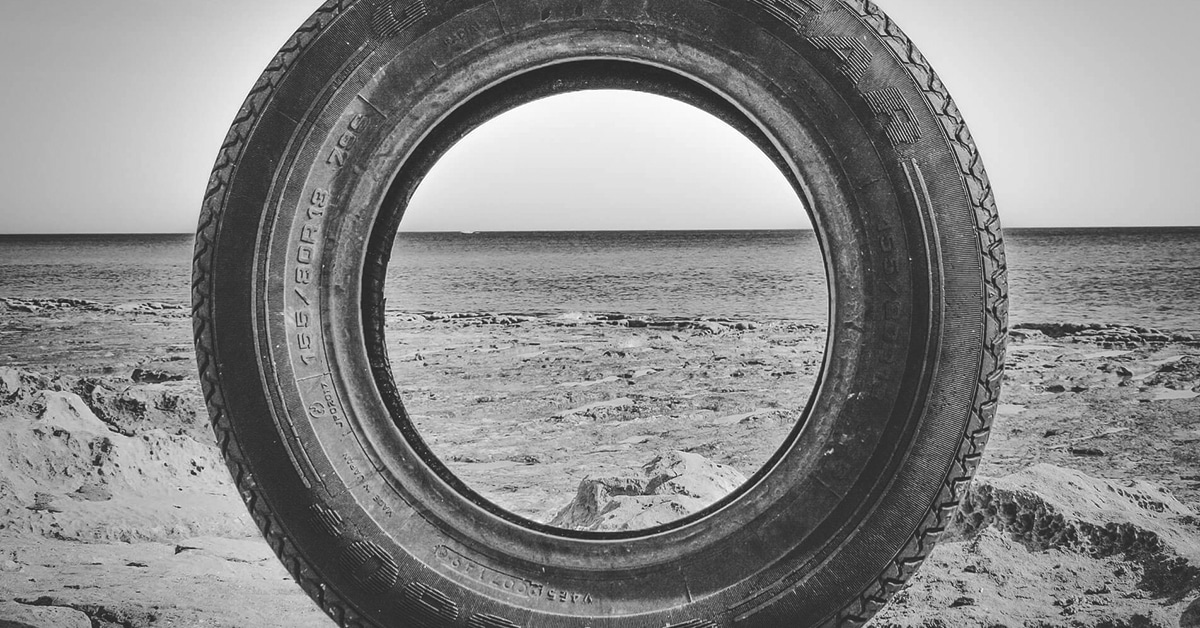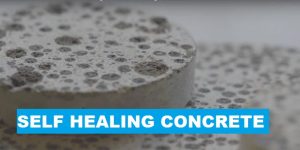Background
In recent years, due to the advancement in civil engineering stream has started utilizing waste tyres in various engineering and infrastructure applications. These applications are on the incremental trajectory due to the awareness and implementation of strict legislation by environmental governing agencies as well as financial supports from government. The financial governments’ support comes in the form tax benefits for the companies and projects that utilizes the waste tyres.
The focus is on applications that are technically beneficial and useful to the public, economically viable and environmentally sound. The key benefit of using waste tyres in civil engineering works is that it can be partially replace the traditional aggregates. These “rubber aggregates” could become an effective alternative outlet to reduce environmental burden on rock extraction.
There has been increased interest in this area of research, and off lately many research organizations as well as industries already started working aggressively in trying to utilize the waste tyres in building materials.
Characteristics of Waste Tyres
Waste tyres have greater potential to compete with conventional material in engineering industries and in certain conditions it preferred as an eminence option.
Waste Tyres may be suitable as an option due to certain factors such as below:
- Tyres are relatively abundant
- Regulatory requirement to use this waste materials
- Need to used lightweight material as filler
- Requirement for flexible and durable material in long term
- Prerequisite to have material that has high resistance to chemical activity and water, as well as able to provide good soundproof and thermal insulation.
Waste tyres have lots of characteristics that make them problematic waste. Ironically, these same characteristics also made them valuable sources in civil engineering practice.
These characteristics include being lightweight, durable, inert and have excellent thermal insulation. The physical and chemical properties of tyres or their derivative determine whether they will be suitable for a certain application or otherwise. Understanding these characteristics also allows us to determination the most appropriate category of used tyre or its derivative for each proposed application.
Some are particularly suitable for use in civil engineering applications such as noise barriers, reefs, and embankments. This material is lightweight, free draining and compressible with low thermal conductivity.
Shredded tyres and chips also have similar properties and they are also being used in civil engineering applications (eg. for base materials to insulation). Granulate is commonly seen on playgrounds and sports surfaces. There is also a range of ground tyres that is similar to powder like size, which is being used as carbon black substitutes.
Standard Size Terminology for Waste Tyres
Commercially you could find many size variants in the market, which sometimes can be very confusing and frustrating if you need to change the supply source half-way through you project or research.
Therefore, a standard of size has been developed as a reference guide in European industries system for material produced from waste tyres. These are the terminology used for different size fractions are:
- Powder,
- Granules – 1mm to 10mm,
- Buffing – 0 to 40mm,
- Chips – 10mm to 50mm,
- Shreds (small) – 40mm to 75mm,
- Shreds (large) – 75mm to 300mm,
- Cut – 300mm to half-tyre,
- Whole tyre, and
- Tyre bales.
Waste Tyre in Building Materials
The utilization of waste tyre in building materials can be considered still at infant stage. Over the years, probably over thousands of research has been conducted on finding the best way to utilize the waste tyre in concrete. Though it is conceptually possible to use the waste tyre in concrete for building materials; we are still unable to fully adopt and use this.
Since the beginning of the construction era, concrete has been the go-to material. Despite knowing the limited capability of concrete in tensile capacity, energy absorption, ductility, shrinkage, etc.; the material continues to be number one choice for construction works.
There have been many research findings to prove the benefit of using waste tyre to enhance these limited inherent capabilities of concrete. The real problem for low adaptation is that there are limited real-time application data to prove these research findings.
However, in recent years due to legislation and financial motivation from the government (all over the world), there has been increased interest in utilizing waste tyre in building material specifically concrete mix.
Where to Use?
Lightweight Concrete – using waste tyre in lightweight concrete mix to produce wall panels could provide a good sound insulation characteristic. On top of that, it also can reduce static charge in the wall caused by electrical appliances.
Roof Panel – the same tyre base lightweight concrete can be used for roof panels as well. Not only it can be good sound insulator, it reduce the heat and keep the building cooler.
Shock Absorption – the building material/concrete with waste tyre also can be a very good shock absorption structural component/element, in buildings near earthquake prone areas, beside railway tracks, etc.
In Pavement and Drainage Applications
Tyre rubbers are commonly used as a partial aggregate in asphalt. Shredded tires are non-biodegradable either above or below the water line under normal conditions. This provides for a stable road base for a longer period than some other lightweight fill materials.
Other than that it also being used as partial replacement for bitumen. In cold climate, tyre chips are used to reduce frost penetration beneath roads that can cause frost heave resulting cracking to pavement and uneven road surface for their resistance and thaw.
Additionally, waste rubbers are used as crack sealant and repair membranes that utilises the flexibility of rubber to provide improved road maintenance.
Somewhere in the mid-2000, during an Expo in Japan, an experimental project was revealed to the public on the effective use of waste tyre as road bed material in a new pavement called “porous elastic road surface (PERS)”.
The pavement in which rubber chips are used instead of crushed stones. The pavement developed distinct features including good drainage, commendable noise reduction, as well as good shock-absorbency and freeze prevention.
The PERS manage to decrease the noise level by 6 – 10 dB compared with conventional asphalt pavement. The reduction is equivalent to the decreased of one-fourth and one-tenth of current traffic volume.
Whole and shredded tyres tend to have high hydraulic conductivity that makes it technically appropriate for drainage applications and/or where free draining is required.
In United States, some of its states allow tire shred to be used in construction of drain fields for septic system.
Other than that, waste tyre derived product is also used to construct leachate drainage channels, explosion and explosives stemming, and service channel to collect organic and oil trapped material.
Lightweight Material for Foundation
The compacted dry density of shredded tyres is about one third of soil, therefore it makes good technical sense to use them as lightweight fill especially for embankment construction where the base foundation is highly compressible. It is also to decrease excessive settlement caused by weight of embankment.
Moreover, taking advantage on rubbers’ low density, it would be good engineering decision to use waste tyre shreds as backfill material to retaining walls and abutments, which helps lessen the earth pressure.
Waste Tyre for Flooring
One of the most fast growing area of waste tyre application is in the area of flooring material. Waste tyres are being used for the surface of the floors. This floors made with rubber will be tough, weather resistant, water and heat proof, durable, and has high energy absorption.
The waste rubber flooring is suitable for any indoor and outdoor space, such as playground, function hall floor, sports facilities, etc. Apart from characteristics mentioned earlier, rubber flooring also provides excellent anti-static and slip resistance properties.
With the possibility of adding synthetic coloring to the waste rubber flooring, the material is sometimes selected by architects for aesthetic purpose as well.
Applications in Coastal and River Engineering
Waste tyre used in these applications includes whole tyre and tyre bale. Normally, coastal and river engineering works involves construction of embankments and/or retaining wall using loose and linked tyres, anti-scour mattresses, armouring streams banks, hearting concrete and/or coastal rock structures and many others.
In constructing an embankment, loose waste tyres are used for slope stabilization. Linked tyres are specially used to reduce the risk of lateral deformation in some retaining wall that has active pressure acting on it.
In addition, for erosion protection, anti-scour mattresses are used to prevent sediment scour around marine structures, bridge piers and on unprotected shorelines. Tyre bales are used as flood defence embankment and armouring purpose.
Using Waste Tyre as Alternative Industrial Fuel
One of major finding that comes out from the various research activities is that waste tyre has a relatively high specific energy content which make them a valuable fuel source. In United States, tyre derived fuel (TDF) industries are one of the largest waste tyre consumption.
Tyre fuels have a competence performance such as fossil fuels. The Rubber Manufacturers Association (RMA) estimated that approximately 130 million scrap tyres were used as fuel in Portland cement plants in early-2000 out of the 290 million tyres produced in the same year.
Additionally, tyre derived fuel also being used in cement kilns factory. Currently, in Europe, waste tyres are used as supplementary fuel to supplement the necessary energy requirements for the cement kilns operation. The cement sector requires 30 million tonnes of fuel equivalent per annum.
Final Note
The volume of waste tyres being discarded in landfills will continue to grow year after year. There has been numerous researches on making the car fuel efficient, but there aren’t any significant studies to reduce the use of tyres.
Probably, car industry players could study the possibility of developing long lasting tyres which will eventually slow down the accumulation rate of waste tyre. Not sure whether the tyre manufacturers would be happy to pursue this idea.
From engineers and engineering point of view, we could and should continue to explore on the potential to expand the application of waste tyre in various engineering activities and areas.










